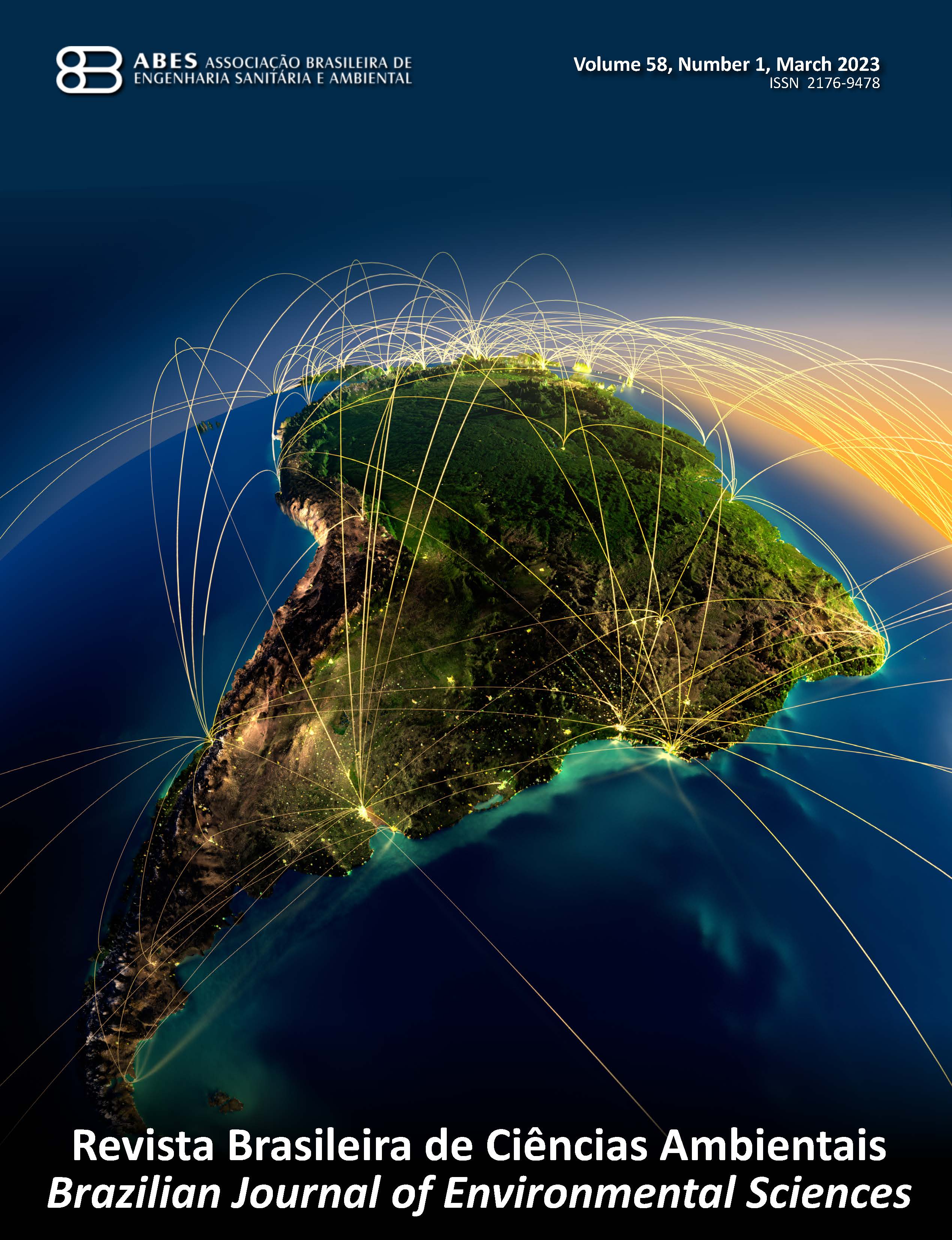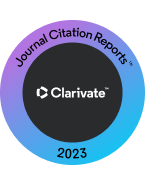Size-mass relationships of aquatic insects in forest streams: addressing a knowledge gap in Neotropical communities
DOI:
https://doi.org/10.5327/Z2176-94782253Keywords:
body length; dry mass; biomass determination; freshwater invertebrates; Atlantic Forest streams.Abstract
Determining individuals’ dry mass is crucial for better understanding community structure in terrestrial and aquatic ecosystems. The establishment of size–mass relationships for different populations constitutes a helpful tool for indirectly determining the total biomass of freshwater communities. In this study, we determined the size–mass relationships of 14 genera from the orders Ephemeroptera, Plecoptera, Trichoptera, and Odonata commonly found in leaf patches in Atlantic Forest streams (SE Brazil). We used individual body length as a size measure and three mathematical models (linear, exponential, and power) to establish the best-fitting equations. The equations described by the power model showed the best fit (coefficient of determination [r²]≥0.80) for the genera Anacroneuria, Macrogynoplax (Plecoptera), Smicridea (Trichoptera), Archaegomphus, Idiataphe, Hetaerina, Heteragrion, and Neocordulia (Odonata); the exponential model presented the best fit for Phylloicus (r²=0.74), Triplectides (Trichoptera, r²=0.60), Enderleina (r²=0.96), and Tupiperla (Plecoptera, r²=0.60); and the linear model exhibited the best fit for Elasmothemis (Odonata, r²=0.85) and Massartella (Ephemeroptera, r²=0.63). Our findings demonstrated that body length is a strong predictor of dry mass for most of the studied genera but some exceptions suggest that it may not fully capture biomass variation. The power models performed better in general, whereas the exponential and linear models were optimal for specific genera, indicating diverse influences on taxa allometry. This study reinforces the need to evaluate different approaches for estimating the dry mass of aquatic insects and underscores the caution required when using indirect methods for biomass determination.
Downloads
References
Akamagwuna, F.C.; Odume, O.N., 2020. Ephemeroptera, Plecoptera and Trichoptera (EPT) functional feeding group responses to fine grain sediment stress in a river in the Eastern Cape, South Africa. Environmental Monitoring and Assessment, v. 192 (4), 214. https://doi.org/10.1007/s10661-020-8187-4.
Alvares, C.A.; Stape, J.L.; Sentelhas, P.C.; Gonçalves, J.L.M.; Sparovek, G., 2013. Köppen's climate classification map for Brazil. Meteorologische Zeitschrift, v. 22 (6), 711-728. https://doi.org/10.1127/0941-2948/2013/0507.
Arnaud, S.; Kari, K.; Lenin, C.; André, M.; Olga, P.; Justin, P.; David, B.; Nedim, T.; Robby, S., 2022. Odonata trophic ecology: from hunting behavior to cross-ecosystem impact. In: Cordoba-Aguilar, A.; Beatty, C.; Bried, J. (Eds.), Dragonflies and Damselflies: Model Organisms for Ecological and Evolutionary Research. Oxford University Press, Oxford, pp. 219-232. https://doi.org/10.1093/oso/9780192898623.003.0016.
Azrita, A.; Syandri, H.; Aryani, N., 2024. Length and weight relationship, condition factor, and morphometric characteristics of eleven freshwater fish species in Koto Panjang reservoir, Indonesia. International Journal of Zoology, v. 2024, 9927705. https://doi.org/10.1155/2024/9927705.
Becker, B.; Moretti, M.S.; Callisto, M., 2009. Length–dry mass relationships for a typical shredder in Brazilian streams (Trichoptera: Calamoceratidae). Aquatic Insects, v. 31 (3), 227-234. https://doi.org/10.1080/01650420902787549.
Benke, A.C.; Huryn, A.D.; Smock, L.A.; Wallace, J.B., 1999. Length-mass relationships for freshwater macroinvertebrates in North America with particular reference to the Southeastern United States. Journal of the North American Benthological Society, v. 18 (3), 308-343. https://doi.org/10.2307/1468447.
Brito, J.P.; Carvalho, F.G.; Juen, L., 2021. Response of the Zygopteran community (Odonata: Insecta) to change in environmental integrity driven by urbanization in Eastern Amazonian streams. Ecologies, v. 2, 150-163. https://doi.org/10.3390/ecologies2010008.
Burgherr, P.; Meyer, E.I., 1997. Regression analysis of linear body dimensions vs. dry mass in stream macroinvertebrates. Archiv für Hydrobiologie, v. 139 (1), 101-112. https://doi.org/10.1127/archiv-hydrobiol/139/1997/101.
Collyer, G.; Perkins, D.M.; Petsch, D.K.; Siqueira, T.; Saito, V., 2023. Land‐use intensification systematically alters the size structure of aquatic communities in the Neotropics. Global Change Biology, v. 29 (14), 4094-4106. https://doi.org/10.1111/gcb.16720.
Costa, L.C.; Kiffer, W.P.; Casotti, C.G.; Moretti, M.S., 2018. Size-mass relationships in Trichodactylus fluviatilis Latreille, 1828 (Decapoda: Brachyura: Trichodactylidae), a macroconsumer in coastal streams of the Atlantic Forest, southeastern Brazil. Journal of Crustacean Biology, v. 38 (5), 539-546. https://doi.org/10.1093/jcbiol/ruy065.
Cressa, C., 1999. Dry mass estimates of some tropical aquatic insects. Revista de Biología Tropical, v. 47 (1-2), 133-141. https://doi.org/10.15517/rbt.v47i1-2.19062.
Dekanová, V.; Streberová, Z.; Novikmec, M.; Svitok, M., 2023. The effect of preservation on biomass and length estimates and its variation within and between two mayfly species. Limnology, v. 24 (3), 181-191. https://doi.org/10.1007/s10201-023-00715-8.
Dekanová, V.; Svitok, M.; Bento, S.; Caramelo, J.; Peixe e Sousa, P.; Carreira, B.M., 2024. Length-mass relationships of pond macroinvertebrates do not hold between Southern and Northern Europe. PeerJ, v. 12, e18576. https://doi.org/10.7717/peerj.18576.
Dekanová, V.; Venarsky, M.P.; Bunn, S.E., 2022. Length–mass relationships of Australian aquatic invertebrates. Austral Ecology, v. 47 (1), 120-126. https://doi.org/10.1111/aec.13077.
El Yaagoubi, S.; Edegbene, A.O.; El Alami, M.; Errochdi, S.; Harrak, R., 2024. Ephemeroptera, Plecoptera and Trichoptera (EPT) trait-based biomonitoring of rivers within the northwestern Rif of Morocco: implications for determining riverine ecosystems ecological health in Africa. Aquatic Sciences, v. 86 (2), 54. https://doi.org/10.1007/s00027-024-01070-1.
González, J.M., 2002. Size-mass relationships of stream invertebrates in a northern Spain stream. Hydrobiologia, v. 489 (1/3), 131-137. https://doi.org/10.1023/a:1023220501921.
Hamada, N.; Nessimian, J.L.; Querino, R.B., 2014. Insetos aquáticos na Amazônia brasileira: taxonomia, biologia e ecologia. Editora do INPA, Manaus, 724 p.
Hamada, N.; Thorp, J.H.; Rogers, D.C., 2019. Thorp and Covich’s Freshwater Invertebrates, Volume Three: Keys to Neotropical Hexapoda. Academic Press, [S.l.].
Hurtado-Borrero, Y.; Pinilla-A, G.; Tamaris-Turizo, C.E., 2020. Relations length-dry weight of nymphs Anacroneuria caraca Stark, 1995 and A. marta Zúñiga & Stark, 2002 (Plecoptera: Perlidae) from a neotropical mountain river. Hidrobiológica, v. 30 (3), 203-209. https://doi.org/10.24275/uam/izt/dcbs/hidro/2020v30n3/hurtado.
Jacquet, C.; Carraro, L.; Altermatt, F., 2022. Meta-ecosystem dynamics drive the spatial distribution of functional groups in river networks. Oikos, v. 2022 (11), e09372. https://doi.org/10.1111/oik.09372.
Johnston, T.A.; Cunjak, R.A., 1999. Dry mass–length relationships for benthic insects: a review with new data from Catamaran Brook, New Brunswick, Canada. Freshwater Biology, v. 41 (4), 653-674. https://doi.org/10.1046/j.1365-2427.1999.00400.x.
Kamburska, L.; Zaupa, S.; Boggero, A., 2023. Size-pattern and larval-length–mass relationships for the most common chironomid taxa in the deep subalpine Lake Maggiore. Water, v. 15 (15), 2730. https://doi.org/10.3390/w15152730.
Kiffer, W.P.; Mendes, F.; Rangel, J.V.; Barbosa, P.; Serpa, K.; Moretti, M.d.S., 2016. Size-mass relationships and the influence of larval and case size on the consumption rates of Triplectides sp. (Trichoptera, Leptoceridae). Fundamental and Applied Limnology, v. 188 (1), 73-81. https://doi.org/10.1127/fal/2016/0855.
Krynak, E.M.; Yates, A.G., 2020. Intensive agriculture alters the biomass size spectrum and body-mass of benthic insects: evidence from a reciprocal transfer experiment. Hydrobiologia, v. 847, 1221-1235. https://doi.org/10.1007/s10750-020-04178-1.
Liebmann, L.; Vormeier, P.; Weisner, O.; Liess, M., 2022. Balancing effort and benefit – How taxonomic and quantitative resolution influence the pesticide indicator system SPEARpesticides. Science of The Total Environment, v. 848, 157642. https://doi.org/https://doi.org/10.1016/j.scitotenv.2022.157642.
Lima, M.; Firmino, V.C.; De Paiva, C.K.S.; Juen, L.; Brasil, L.S., 2022. Land use changes disrupt streams and affect the functional feeding groups of aquatic insects in the Amazon. Journal of Insect Conservation, v. 26 (2), 137-148. https://doi.org/10.1007/s10841-022-00375-6.
Loomer, H.A.; Kidd, K.A.; Erdozain, M.; Benoy, G.A., Chambers, P.A.; Culp, J.M., 2023. Stream macroinvertebrate community responses to an agricultural gradient alter consumer-driven nutrient dynamics. Hydrobiologia, v. 850, 315-334. https://doi.org/10.1007/s10750-022-05070-w.
Mährlein, M.; Pätzig, M.; Brauns, M.; Dolman, A.M., 2016. Length–mass relationships for lake macroinvertebrates corrected for back-transformation and preservation effects. Hydrobiologia, v. 768 (1), 37-50. https://doi.org/10.1007/s10750-015-2526-4.
Martin, C.A; Proulx, R.; Magnan, P., 2014. The biogeography of insects’ length–dry mass relationships. Insect Conservation and Diversity, v. 7 (5), 413-419. https://doi.org/10.1111/icad.12063.
Martins, R.T.; Melo, A.S.; Gonçalves Jr, J.F.; Hamada, N., 2014. Estimation of dry mass of caddisflies Phylloicus elektoros (Trichoptera: Calamoceratidae) in a Central Amazon stream. Zoologia, v. 31 (4), 337-342. https://doi.org/10.1590/s1984-46702014000400005.
McCarty, J.D.; Cross, W.F.; Albertson, L.K.; Tumolo, B.B.; Sklar, L.S., 2022. Life histories and production of three Rocky Mountain aquatic insects along an elevation-driven temperature gradient. Hydrobiologia, v. 849, 3633-3652. https://doi.org/10.1007/s10750-022-04978-7.
Méthot, G.; Hudon, C.; Gagnon, P.; Pinel-Alloul, B.; Armellin, A.; Poirier, A.M.T., 2012. Macroinvertebrate size–mass relationships: how specific should they be? Freshwater Science, v. 31 (3), 750-764. https://doi.org/10.1899/11-120.1.
Meyer, E.I., 1989. The relationship between body length parameters and dry mass in running water invertebrates. Archiv für Hydrobiologie, v. 117 (2), 191-203. https://doi.org/10.1127/archiv-hydrobiol/117/1989/191.
Miserendino, M.L., 2001. Length-mass relationships for macroinvertebrates in freshwater environments of Patagonia (Argentina). Ecología Austral, v. 11 (1), 3-8. ISSN 1667-782X.
Mocq, J.; Dekanová, V.; Boukal, D.S., 2024. Length–mass allometries of the larvae of aquatic dipterans: differences between taxa, morphological traits, and methods. Journal of Insect Science, v. 24 (1), 10. https://doi.org/10.1093/jisesa/ieae012.
Nakagawa, H.; Takemon, Y., 2014. Length-mass relationships of macroinvertebrates in a freshwater stream in Japan. Aquatic Insects, v. 36 (1), 53-61. https://doi.org/10.1080/01650424.2014.1001400.
Oester, R.; dos Reis Oliveira P.C.; Moretti, M.S.; Altermatt, F.; Bruder, A., 2023. Leaf-associated macroinvertebrate assemblage and leaf litter breakdown in headwater streams depend on local riparian vegetation. Hydrobiologia, v. 850, 3359-3374. https://doi.org/10.1007/s10750-022-05049-7.
R Core Team, 2024. R: A language and environment for statistical computing. R Foundation for Statistical Computing, Vienna, Austria.
Schneider, C.A.; Rasband, W.S.; Eliceiri, K.W., 2012. NIH Image to ImageJ: 25 years of image analysis. Nature Methods, v. 9 (7), 671-675. https://doi.org/10.1038/nmeth.2089.
Smock, L.A., 1980. Relationships between body size and biomass of aquatic insects. Freshwater Biology, v. 10 (4), 375-383. https://doi.org/https://doi.org/10.1111/j.1365-2427.1980.tb01211.x.
Towers, D.J.; Henderson, I.M.; Veltman, C.J., 1994. Predicting dry weight of New Zealand aquatic macroinvertebrates from linear dimensions. New Zealand Journal of Marine and Freshwater Research, v. 28 (2), 159-166. https://doi.org/10.1080/00288330.1994.9516604.
Wahl, C.; Diaz, R; Kaller, M., 2021. Invasive floating fern limits aerial colonization and alters community structure of aquatic insects. Wetlands, v. 41, 60. https://doi.org/10.1007/s13157-021-01457-y.
Wenzel, F.; Meyer, E.; Schwoerbel, J., 1990. Morphometry and biomass determination of dominant mayfly larvae (Ephemeroptera) in running waters. Archiv für Hydrobiologie, v. 118 (1), 31-46. https://doi.org/10.1127/archiv-hydrobiol/118/1990/31.
Wonglersak, R.; Fenberg, P.B.; Langdon, P.G.; Brooks, S.J.; Price, B.W., 2021. Insect body size changes under future warming projections: a case study of Chironomidae (Insecta: Diptera). Hydrobiologia, v. 848 (11), 2785-2796. https://doi.org/10.1007/s10750-021-04597-8.
Zamora-Camacho, F.J., 2025. We are what what we eat eats: the effects of prey diet on growth, development, behavior and survival of a secondary consumer. Hydrobiologia, v. 852, 55-67. https://doi.org/10.1007/s10750-024-05637-9.
Zilli, F.; Barco, J.D.; Vanzetti, A., 2017. Biometry of neotropical invertebrates inhabiting floodplain rivers: unraveling bionomy. Iheringia. Série Zoologia, v. 107, e2017014. https://doi.org/10.1590/1678-4766e2017014.
Published
How to Cite
Issue
Section
License
Copyright (c) 2025 Revista Brasileira de Ciências Ambientais

This work is licensed under a Creative Commons Attribution 4.0 International License.

























